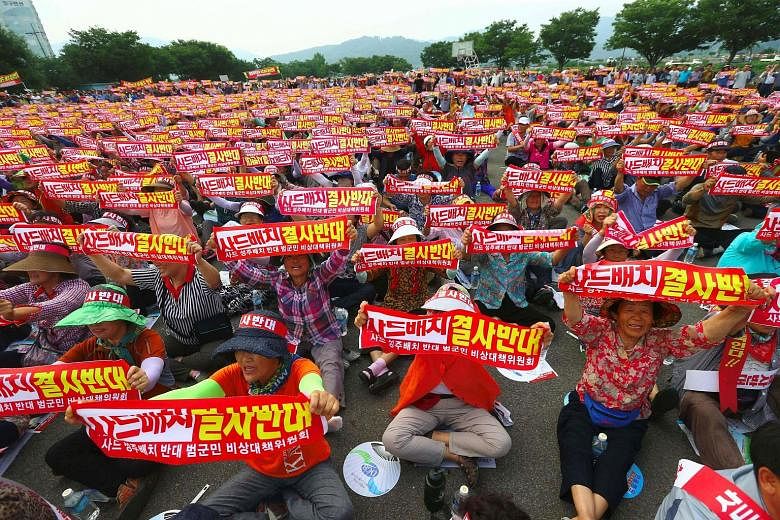SEOUL • South Korea yesterday announced the site where a US Thaad anti-missile defence unit will be deployed against North Korea's missile and nuclear threats, a plan that has angered China and prompted a warning of retaliation from Pyongyang.
Seoul and Washington last Friday said they had made a final decision to deploy the Terminal High Altitude Area Defence (Thaad) system in South Korea.
Tension on the Korean peninsula has been high since North Korea conducted its fourth nuclear test in January and followed that with a satellite launch and a string of test launches of various missiles.
South Korea's Defence Ministry said the Thaad system would be deployed in the south-eastern county of Seongju to maximise its effectiveness while minimising any impact on residents and the environment.
"By operating the US Thaad battery in Seongju, we will be able to better protect one-half to two- thirds of our citizens from North Korean nuclear and missile threats," the ministry said in a statement.

"It will dramatically strengthen the military capabilities and readiness to defend critical national infrastructure such as nuclear power plants and oil storage facilities, as well as the military forces of the South Korea-US alliance."
North Korea's military on Monday threatened to retaliate against the deployment of the system with a "physical response"once its location and time of installation had been decided.
South Korea's Defence Ministry has said it aims to have the system operational by the end of next year.
The decision to deploy Thaad is the latest move to squeeze the increasingly isolated North Korea, but China worries the system's radar will be able to track its military capabilities. Russia also opposes the deployment.
South Korea and the United States have said Thaad will only be used in defence against North Korean ballistic missiles, but China has warned it would destabilise the regional security balance.
Thaad is built by Lockheed Martin and designed to defend against short- and medium-range ballistic missiles by intercepting them high in the atmosphere, or outside it. The US already has a Thaad system on the island of Guam.
Putting Thaad in Seongju would also allow for protection of major US military installations in the South, while limiting the range of its radar's reach into China, South Korean media said.
The US has about 28,000 troops in South Korea. It will pay for the Thaad system.
South Korean Finance Minister Yoo Il Ho told Parliament the government was making contingency plans in case China took action in response to the deployment.
But he added: "I don't think there will be a major retaliatory action in terms of the economy."
Meanwhile, Chinese Foreign Ministry spokesman Lu Kang has repeated Beijing's opposition to Thaad. "China will resolutely take the necessary steps to protect our reasonable interests," he said, without elaborating.
Recent media speculation in South Korea about possible Thaad sites had fuelled protests from residents, including those of Seongju. REUTERS

